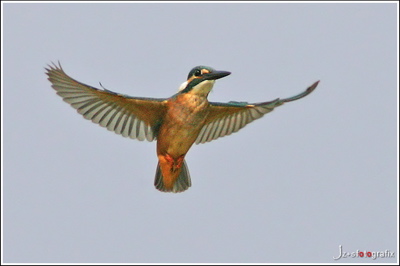Little Egret fishing
 K.C. Tsang was standing on the banks of the Sungei Punggol one morning in November 2006 watching all the Little Egrets (Egretta garzetta) massing along the banks very near to the water’s edge. Suddenly one of them took off, hovered over the surface of the water and within a split second plunged it long bill into the water and grabbed a fish.
K.C. Tsang was standing on the banks of the Sungei Punggol one morning in November 2006 watching all the Little Egrets (Egretta garzetta) massing along the banks very near to the water’s edge. Suddenly one of them took off, hovered over the surface of the water and within a split second plunged it long bill into the water and grabbed a fish.He noticed that the birds always had the sun shining from the front of them in the morning, when hovering and fishing. There would thus be no shadow cast to alert the fish.
And K.C. added, “I though that these fellows feed mostly on insects among the grass. This has been observed most of the time. This is something new to me. Maybe a person with a video cam would be able to capture the whole episode.”
Our bird specialist R. Subaraj has this to say: “Little Egrets mainly feed by walking along the water's edge or in the shallows, catching fish by stabbing at them with it's long bill. The flying over the surface technique that you describe is therefore interesting and obviously an adaptation to take advantage of a situation.
 “The egrets feeding on grasshoppers in the fields around Singapore are usually Cattle Egrets (Bubulcus ibis) (above). This is their natural behaviour. Intermediate (Mesophoyx intermedia) and Little will also do that from time to time... but it is not their normal way of feeding.”
“The egrets feeding on grasshoppers in the fields around Singapore are usually Cattle Egrets (Bubulcus ibis) (above). This is their natural behaviour. Intermediate (Mesophoyx intermedia) and Little will also do that from time to time... but it is not their normal way of feeding.”Input by K.C. Tsang; image of Little Egret by KC and Cattle Egret by John Lynn.
Labels: Feeding: method







